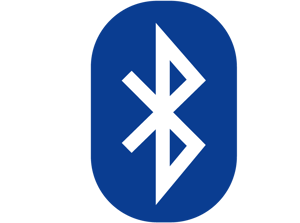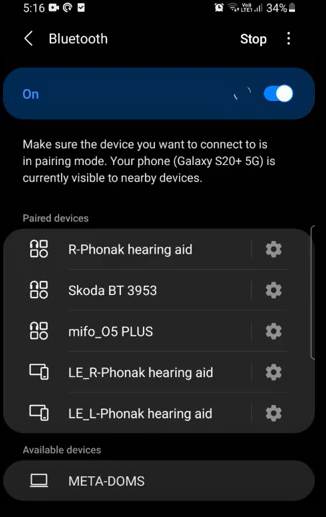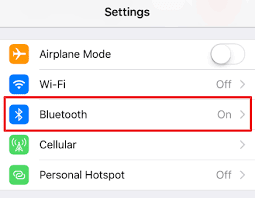Time to Read: 10 Minutes
Most hearing aids available in 2021 are enabled with direct streaming for Bluetooth. However, when it comes to streaming via Bluetooth with hearing aids, not all Bluetooth is the same.
What's the difference? What are the pros and cons? In this video, Emma discussed Bluetooth Classic versus Bluetooth Low Energy and what this means for the hearing aid user.
Watch the video or read the transcript below.
Hi there, welcome back to Value Hearings YouTube channel.
I'm Emma. I'm a clinical audiologist.
 And today I'm going to talk you through the different types of Bluetooth available in the hearing aid market.
And today I'm going to talk you through the different types of Bluetooth available in the hearing aid market.
When you're choosing hearing aids with your audiologist, the most important thing is that they find the best hearing aid for you in terms of hearing quality and what's going to support you in your day-to-day life.
But a bigger and bigger part of people's lives now is Bluetooth and the ability to stream from their mobile phone to their hearing aids.
So, it is good for us to go through with you during the appointment, the pros and cons of the different approaches that we have in our industry.
There are three approaches in our industry to Bluetooth streaming between mobile phones and hearing aids.
One is MFi - Made for iPhone, the other is ASHA that's Audio Streaming for Hearing Aids, which is the android protocol very, very similar to the MFi and then there's also Bluetooth Classic which is what Sonova uses in their hearing aids.
The differences? I won't go into in terms of technical differences in the background, and how they were all individually developed etc, etc. That's not particularly interesting to you.
What I'm going to do is go through the differences when it comes to you as a user.
Bluetooth Classic
 We'll start with the Sonova approach of using Bluetooth Classic.
We'll start with the Sonova approach of using Bluetooth Classic.
For you as a hearing aid user, if you were to go for a Sonova hearing aid, what you would find when you're using your Bluetooth is, for example, when you're taking phone calls or making phone calls, it's completely hands-free meaning you can have your phone in your pocket or in the boot of the car while you're driving and you can talk to the person at the other end of the phone. What's happening is the microphone for you on the phone call is actually now on your ear through the hearing aid.
So this has lots of advantages in that you can multitask.
You can do anything you like when you are taking calls hands-free. The downside that we find in the industry though, is that the person on the other end of the phone tends to complain about the sound quality, especially if you are in a lot of noise.
That was worse with the Marvel, the older products from Phonak for example, but it has gotten a lot better with their more recent products.
But what I am finding is my more softly spoken clients, or those who do work in noisy environments, are still saying that the person on the other end of the phone is complaining.
They really wish that they could still have the sound of the call streaming into their ears but not always have to do it hands-free to communicate. They’d love to be able to hold the phone up, or put it in front of them, so that's the downside of it.
The other real positive side of Bluetooth Classic with Sonova is that you can connect those hearing aids with anything that has Bluetooth in it - so any mobile phone - even a brick phone as long as it has Bluetooth in it - will connect. That also includes any tablets or computers or TVs that have Bluetooth in them or Bluetooth headset product protocol.
So that's pretty cool for our clients who want to be able to pair their hearing aids to their work laptop for meetings and whatnot. There is an increase in latency (but) I haven't had any of my clients complain about that. They have not said that the sound quality is poor when compared to when they were using the other protocols, so that hasn't been such an issue.
It definitely is known that it uses up more battery power though, so that's definitely something that could be worth considering whether or not to go for rechargeable, for example.
For that reason, it is definitely discussion to have with your audiologist based on your needs and the type of hearing loss you have and whatnot. But that's certainly one of those things that could make a difference to your quality of Bluetooth if you were to be using it a lot, you may find that it's just getting through the battery way too quickly.
MFi and ASHA Bluetooth Low Energy protocols
 MFi, the made-for-iPhone protocol, and the ASHA protocol which is actually the audio streaming for hearing aids - a Google Android initiative both work quite similarly on a type of Bluetooth that's LE Bluetooth, so Bluetooth Low Energy.
MFi, the made-for-iPhone protocol, and the ASHA protocol which is actually the audio streaming for hearing aids - a Google Android initiative both work quite similarly on a type of Bluetooth that's LE Bluetooth, so Bluetooth Low Energy.
The purpose is to draw a lot less energy from the hearing aid, so much better in battery life, but to not affect the quality. So, not for you to be having so many issues compared to Bluetooth Classic.
You shouldn't really notice that distance is affected, or that interference is more likely, so it's pretty good in that sense. It is pretty reliable.
The other nice thing with the Bluetooth Low Energy systems, as well the MFi and the ASHA protocol, is that it's not hands-free. Look, some of my clients do prefer to be hands-free, but the sound quality of not being hands-free and holding the phone here or in front of them is pretty superior to what we're getting with the Sonova products.
If you were someone who was on phone calls a lot, then I really would recommend that for sound quality.
At the moment it is a little bit easier with Made For iPhone and ASHA as well to control the amount of information you want to get from your hearing aids.
So, with the Sonova Bluetooth Classic approach it can be a bit tedious, because you may be getting constant interruptions from your phone when there's a text message or an email.
We can, with most models, switch off that alert but with a lot of phones it still causes the hearing aid to dampen its microphones for a few seconds at a time and this can be pretty tedious.
It's simply because the phone does not know it’s a hearing aid that you're wearing. It actually thinks it's a headphone so you want to hear everything that's happening on your phone and some people really do.
They love being able to hear every text message and phone call and whatnot. My own father-in-law thinks it's great. He never gets in trouble with my mother-in-law anymore from missing her text messages to come and pick her up from the train station, but most people don't like being constantly interrupted with what's happening on their phone, so it can be a bit tedious trying to figure that out.
Pair once, pair twice
With the MFi and the ASHA protocol this isn't such an issue. It generally is not a setting but if we want it to be it can be, it's just much easier to control. It's much more streamlined. There's certainly a lot less troubleshooting with the MFi and ASHA protocol as well, simply because you pair the hearing aids once and it's all done.
For phone calls streaming and for the app use with Sonova, you actually have to pair twice.
You have to pair for streaming and phone calls, and then you have to go and pair separately for use with the app. So that can be a little bit tedious for some people.
As you can see, pros and cons to both, swings and roundabouts as they say. As an audiologist, what we find is if there is someone who could benefit from either of these hearing aid models that offer the protocol, sometimes we do just say, ‘these are your choices when it comes to Bluetooth use’ and maybe that will be the reason that you'll choose one manufacturer over another.
But really though, when choosing a hearing aid it should be about the hearing aid as a hearing aid.
Bluetooth should definitely come as a secondary priority but it is good to know the differences and what's available.